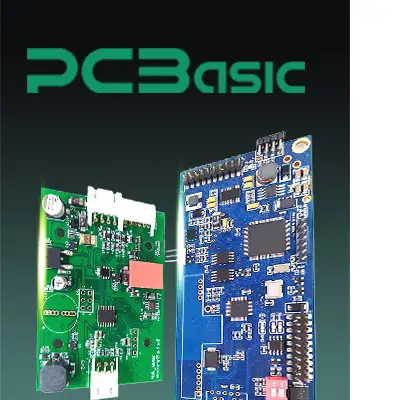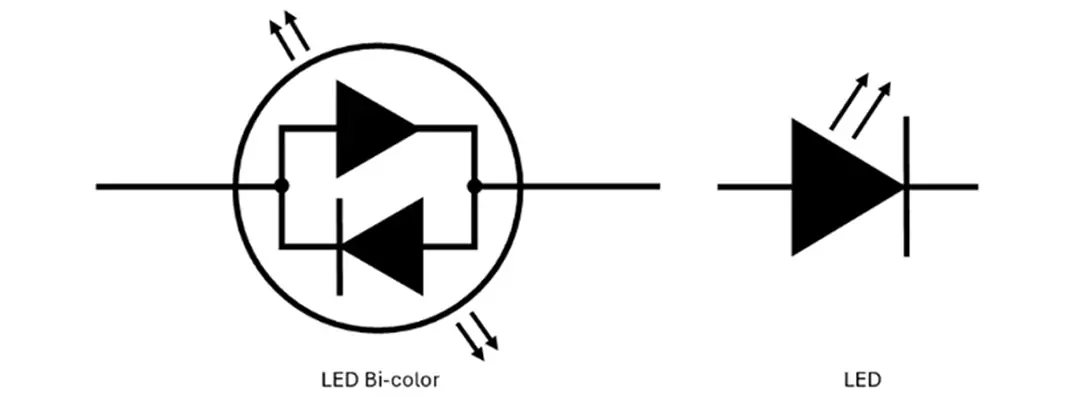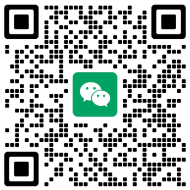

Global high-mix volume high-speed PCBA manufacturer
9:00 -18:00, Mon. - Fri. (GMT+8)
9:00 -12:00, Sat. (GMT+8)
(Except Chinese public holidays)


Global high-mix volume high-speed PCBA manufacturer
9:00 -18:00, Mon. - Fri. (GMT+8)
9:00 -12:00, Sat. (GMT+8)
(Except Chinese public holidays)
HomePage > Blog > Knowledge Base > Diode Symbol Explained – Definition, Types and Symbols
The diode is one of the most common and fundamental devices in modern electronic components. Understanding the diode symbol is of great significance for circuit design, analysis or maintenance. Whether you are a student, an electronics enthusiast, or a professional engineer, master what a diode is, what a diode does, and how to correctly read diode symbols. All of these can help you read and draw circuit diagrams more efficiently.
In this article, you will learn:
The definition and function of a diode
The types of diodes and the corresponding diode symbols
Accurately identify different types of diodes in circuit diagrams

A diode is a semiconductor component that only allows current to flow in one direction and blocks reverse current. It has two terminals: an Anode and a Cathode. When current flows from the anode to the cathode, the diode conducts. When the current direction is reversed, the diode blocks the current. In other words, a diode is a component that only allows unidirectional conduction and reverse cut-off.
Due to this characteristic, diodes are very commonly used in circuits. It can n convert alternating current (AC) into direct current (DC), serving as reverse connection protection to prevent the power supply from being connected in reverse and damaging the circuit, and can also be used for voltage regulation (such as Zener diodes) as well as signal modulation and detection. Understanding what a diode is and being able to recognize its diode symbol is the foundation for comprehending the working principle of circuits.
A diode is mainly used to control the direction of current and manage voltage, playing multiple important roles.
Rectification
The most common use of diodes is rectification, converting alternating current (AC) to direct current (DC). Silicon diodes are often used to form half-wave rectifiers or bridge rectifiers, allowing current to flow only from the anode to the cathode, achieving unidirectional conduction. In a power circuit, the rectified direct current can be further smoothed and supplied to the load for use.
Voltage Regulation
Zener diodes can maintain a stable output voltage under reverse bias and are often used in power supply voltage regulation or overvoltage protection circuits to prevent voltage fluctuations from damaging electronic components.
Signal Control and Switching
Schottky diodes and PIN diodes are suitable for high-frequency and high-speed switching scenarios. With low forward voltage drop and fast response speed, it is suitable for RF circuits, modulation and detection circuits, and is widely used in communication and high-frequency electronic equipment.
Light Emission
A light-emitting diode (LED) emits light when forward-bias and is used for display, indication and lighting. It has the advantages of low power consumption, long lifespan and high efficiency, making it an indispensable light source device for modern electronic products.
Protection
Diodes can protect circuits by blocking reverse current or absorbing voltage spikes. Flyback diodes are usually connected in parallel across motors or relays to suppress the reverse voltage generated by inductive loads and prevent damage to the circuit due to reversed polarity or surge voltages.
Whether it is the diode symbol seen in the circuit diagram or the actual component on the circuit board, the diode clearly indicates the direction of current - from the anode to the cathode, and fulfills its specific function in the circuit.

Time is money in your projects – and PCBasic gets it. PCBasic is a PCB assembly company that delivers fast, flawless results every time. Our comprehensive PCB assembly services include expert engineering support at every step, ensuring top quality in every board. As a leading PCB assembly manufacturer, we provide a one-stop solution that streamlines your supply chain. Partner with our advanced PCB prototype factory for quick turnarounds and superior results you can trust.
If we want to understand how a diode works, we can start from the internal structure of the diode. For instance, a common silicon diode is composed of P-N junctions, where the P-region is the anode and the N-region is the cathode. The P-region is rich in holes, and the N-region is rich in free electrons. When they come into contact, a depletion region is formed at the junction, which is the potential barrier region that the current needs to overcome.
When we apply a forward voltage (positive voltage to the anode and negative voltage to the cathode) to an anode-cathode diode, the external voltage will lower the potential barrier of the P-N junction, causing electrons to flow from the N-region to the P-region and holes to flow from the P-region to the N-region. At this point, the diode is conducting and the current can pass through smoothly.
If we connect the diode in reverse to the circuit (with the anode connected to a negative voltage and the cathode to a positive voltage), the external voltage will increase the potential barrier of the P-N junction, preventing electrons and holes from crossing the junction region, and the diode will enter the cut-off state. In this case, there will only be a very small leakage current present, which can almost be ignored.
Because of this characteristic of unidirectional conduction and reverse cut-off, diodes in circuits act like one-way valves, allowing current to flow only in the direction from anode to cathode. When we read or design circuit diagrams, it is very important to understand this diode direction, which is the basis for achieving rectification, protection and signal control.
There are various types of diodes, and each has a unique circuit symbol and specific function in electronic circuits. Understanding these characteristics and diode symbols helps us read circuit diagrams more accurately and select appropriate components according to requirements.

Standard silicon diodes are the most commonly used type of diode and are mainly used for power rectification. They only allow current to flow from the anode to the cathode, blocking reverse current, thereby achieving the conversion from alternating current (AC) to direct current (DC). On the circuit board, the direction can be identified by the anode and cathode markings.
The standard silicon diode symbol is a triangle pointing to a vertical line, with the vertical line representing the cathode.

The Zener diode symbol is similar to standard diode symbol, but the ends of the cathode line are bent, which is used to indicate its special conduction characteristics under reverse bias. When the reverse voltage reaches the Zener voltage, the voltage begins to conduct, thereby maintaining a stable voltage. It is widely used in power supply voltage stabilization and overvoltage protection circuits, effectively preventing damage to sensitive components caused by voltage fluctuations.

The cathode line of the Schottky diode symbol is in the shape of an "S". It is renowned for its low forward voltage drop and fast switching speed, making it highly suitable for rectification in high-frequency circuits, switching power supplies and power converters. Schottky diodes can reduce energy loss and improve circuit efficiency in high-speed switching environments.

When a light emitting diode is forward-biased, it emits visible or infrared light. The light emitting diode symbol is a standard diode with two outward arrows, indicating the emission of light. LED is widely used in display, status indication, decorative lighting and high-efficiency lighting fields due to its low power consumption, long lifespan and high efficiency. It can be seen in everything from digital display screens to automotive lighting.
Mastering these common diode types and their circuit symbols helps to correctly read circuit diagrams in design and maintenance, and select the appropriate diodes according to different applications, whether for power rectification, signal control, lighting or optical communication.

The backward diode is also known as a tunnel rectifier. The reverse diode symbol is similar to the mirror image of a standard diode symbol, reflecting its reverse conduction characteristics. A backward diode conducts more easily in the reverse direction than in the forward direction. Although it is less commonly used in general circuits, it is very useful in radio frequency (RF) detection and demodulation applications.

The tunnel diode symbol has two vertical lines at the junction, representing its special negative resistance characteristic. It is manufactured through a highly doped process, enabling electrons to tunnel the potential barrier at low voltages, thereby forming a negative resistance region. This characteristic makes tunnel diodes highly valuable in high-frequency oscillators, microwave circuits and high-speed switches.

The PIN diode is named "PIN" because it has an intrinsic (undoped) layer between the P-type and N-type semiconductors. The intrinsic layer will be marked in the data. PIN diodes can process signals with low distortion at high frequencies and can act as variable resistors under different bias currents, making them highly suitable for RF switches, microwave attenuators, and high-speed communication circuits.
Here’s a quick diode symbol chart for easy reference:
|
Diode Type |
Diode Symbol |
Key Use |
|||
|
Standard Silicon Diode |
▶︎ |
AC to DC rectification |
|||
|
Zener Diode |
▶︎ (with bent cathode) |
Voltage regulation |
|||
|
Schottky Diode |
▶︎ (S-shaped cathode) |
Fast switching |
|||
|
LED |
▶︎ + arrows out |
Light emission |
|||
|
Backward Diode |
▶︎ (mirrored symbol) |
RF detection and demodulation |
|||
|
PIN Diode |
▶︎ (with i-layer) |
RF switching |
|||
|
Tunnel Diode |
▶︎ (double junction) |
Oscillators |
|||
|
Photodiode |
▶︎ + arrows in |
Light detection in sensors and communication |
|||
|
Varactor Diode |
|
|
|||
|
Laser Diode |
|
Optical communication and laser applications |
This diode symbol chart is invaluable for quickly identifying diode schematic symbols.
When reading electronic circuit diagrams, correctly understanding the diode symbol is the basis for ensuring the accuracy of circuit design and maintenance. Generally, it can be judged from the following aspects:
Identify the triangle and line: In a circuit diagram, triangles represent anodes and vertical lines represent cathodes. The anode corresponds to the positive electrode, and the cathode corresponds to the negative electrode. The direction of the current can be initially determined by the symbol itself.
Check the diode direction: The current can only flow from the anode to the cathode. The direction indicated by the symbol is the conduction direction. If the symbol is opposite to the current path, the diode is in the cut-off state in that direction and will not conduct.
Confirm diode orientation in the circuit: On actual circuit boards, diodes usually have cathode marks (such as white stripes or silkscreen symbols). It is essential to ensure that the installation direction is consistent with the symbols in the circuit diagram.
Recognize special diode types, such as the cathode wire of the Zener diode symbol with a folded angle, for reverse voltage stabilization; the cathode line of the Schottky diode symbol is in the shape of an "S" and is used for high-speed switching; and the LED symbol has an outward arrow indicating the direction of light emission. Different symbols help you quickly distinguish the types and uses of diodes.
In the detection stage, the diode symbol on the multimeter indicates the diode test mode. In this mode, the multimeter will display the forward voltage drop of the diode. By measurement, it can be determined whether the diode is damaged and whether the installation direction is correct. This is very practical when inspecting rectifier circuits or protection circuits.
When drawing circuit diagrams, using the correct diode symbol can make the schematic clear and easy to read. First, the anode is drawn as a triangle and the cathode as a vertical line, indicating that the current flows from the anode to the cathode. This is the standard drawing method, which can avoid misunderstandings during installation or maintenance.
For LED or photodiode, an arrow needs to be added to the symbol. Arrows pointing outward indicate light emission (LED), and arrows pointing inward indicate light reception (photodiode), which can directly reflect the function of the device.
When drawing a common diode, it is sufficient to use standard circuit symbols. Avoid overly simplified or custom drawing methods to ensure that others do not get confused when reading the circuit.
When dealing with different types of diodes, you can refer to the diode symbol chart.
Understanding the diode symbol is of great significance to those engaged in electronic design or maintenance. As long as one is clear about what a diode is, what a diode does and how does a diode work, one can better read circuit diagrams and design reliable electronic systems.
From silicon diodes, Zener diodes, Schottky diodes to LEDs, each type of diode has its unique function and circuit symbol. After repeated practice, judging the anode and cathode directions and identifying different diode symbols will become natural and accurate.
After mastering this knowledge, you will be able to read circuit diagrams more confidently, troubleshoot and repair circuit faults, and select the appropriate diode types according to project requirements.

Assembly Enquiry
Instant Quote
Phone contact

+86-755-27218592
In addition, we've prepared a Help Center. We recommend checking it before reaching out, as your question and its answer may already be clearly explained there.
Wechat Support

In addition, we've prepared a Help Center. We recommend checking it before reaching out, as your question and its answer may already be clearly explained there.
WhatsApp Support

In addition, we've prepared a Help Center. We recommend checking it before reaching out, as your question and its answer may already be clearly explained there.
